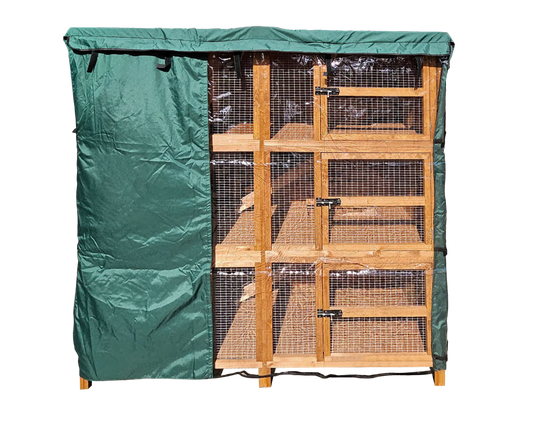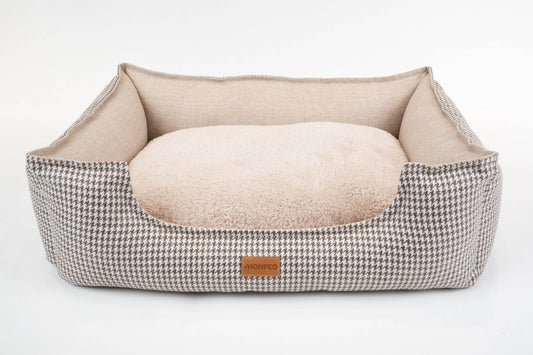Whether you have a dog who enjoys long lingering walks or a sun-worshipping cat who stays closer to home, this summer season comes with its hazards and it’s important you know how to protect your pets from the heat.
Keep your cool
When temperatures rise above 23°C it can start to become too hot for dogs, especially for those with flat faces (such as Pugs and Bulldogs) and those with thick or dark-coloured coats. Dogs are unable to sweat like we do and rely on panting to cool themselves down, which is not as effective.
As the temperature increases, so do the risks of heatstroke, and it’s important to know how to tell when your pet’s had enough. Excessive panting means it’s time for a ‘time out’ but if your dog begins drooling heavily, vomits or loses consciousness then you must seek emergency veterinary attention.
Cats tend to be much better at keeping their cool as they’ve evolved from warm climates.
You may notice a hot cat will spend longer asleep, groom themselves more frequently or breathe through their mouth to cool down. However, if your cat has sweaty feet or begins to pant heavily they could be suffering from heatstroke and you will need to contact your vet urgently.
To help keep them cool this summer check out our Beat The Heat collection.
How to avoid heatstroke
- Don’t walk your dog during the hottest part of the day - early morning or late evening will be more comfortable for them.
- If the pavement is too hot for you, it’s too hot for your dog. Hold the back of your hand to the ground to see how it would feel on your dog’s paws and stick to grassy areas if necessary.
- Ensure that your dog or cat has access to shady areas in the garden or limit the amount of time they spend out there. Try to encourage them to cool down indoors if they look like they’re getting too hot.
- Provide your pet with plenty of fresh drinking water so they do not become dehydrated. Cats often prefer to drink from a source of running water so you might like to offer the tap or invest in a cat drinking fountain. You could also switch to a wet food if you’re concerned about your pet’s water intake.
- NEVER leave your dog in a car on a warm day, even for a short while with the windows open. Cars heat up incredibly quickly and there have been far too many situations where dogs have died in vehicles due to owners not realising how hot it was inside.
Feel the burn
Just like us, pets can suffer from sunburn – especially if they have very thin coats or areas of hairless skin. The nose and tips of the ears are particularly prone to burning. Try to keep your pet out of the sun when it’s at its hottest as much as possible and use a pet safe sunscreen on areas of exposed skin.
Summer pests
Summer months are the peak time for fleas and ticks, which can transmit nasty diseases to your pets as well as making them itchy or uncomfortable. Ensure your cat or dog is adequately protected from parasites by using suitable flea and tick prevention.
Your vet can advise you on the best products for your pet. Bees and wasps are also something that pet owners should look out for, especially with dogs and cats who enjoy trying to catch flies. A sting in the mouth can give a pet a painful shock so be vigilant and discourage them from chasing as much as possible. Stings are not usually dangerous and the feeling soon wears off but if you notice your dog or cat starts to struggle to breathe or collapses, they could have suffered an allergic reaction and will need urgent veterinary attention.
The UK’s indigenous snakes are at their most active during the summer and the one that pet owners need to watch out for is the venomous European adder.
Adders are identifiable by a pattern of black arrows or zigzags running down their length. If you suspect that your pet has been bitten by an adder, you should contact your vet immediately. Signs of an adder bite include swelling, panting, weakness, seizure, abnormal bleeding or collapse.
BBQs
Whose stomach doesn’t start to rumble at the smell of a BBQ? It’s lovely to be able to cook and eat outside during the summer months but watch out for your pets while you’re tucking in to your burgers as they are likely to be just as keen as you!
Cooking meat will attract your pets but food straight off the grill and hot coals can result in serious burns so it’s essential you keep them out of the way. Don’t feed your pets from a BBQ as it will reinforce the perception of it as a source of food and will make it more difficult for you to keep them away.
Never feed your dog cooked bones as they can splinter and become stuck in their mouth, throat or intestines and if you like to pop a corncob on your barbie, beware! They are particularly dangerous for dogs as they are not able to digest them at all.
Ensure you dispose of chicken bones, skewers, meat wrappers and leftovers very carefully as bin raiding can result in a very expensive trip to the vet. Also, BBQs can take a long time to cool down when you’ve finished cooking so do not leave your pet unattended in the garden afterwards. Tip your coals into a bucket of water rather than on the ground to avoid burnt paws.
Enjoy the sunshine and have a fun, safe summer with your pets. To help keep them cool check out our Beat The Heat collection!
If you enjoyed this article, have a look at:









